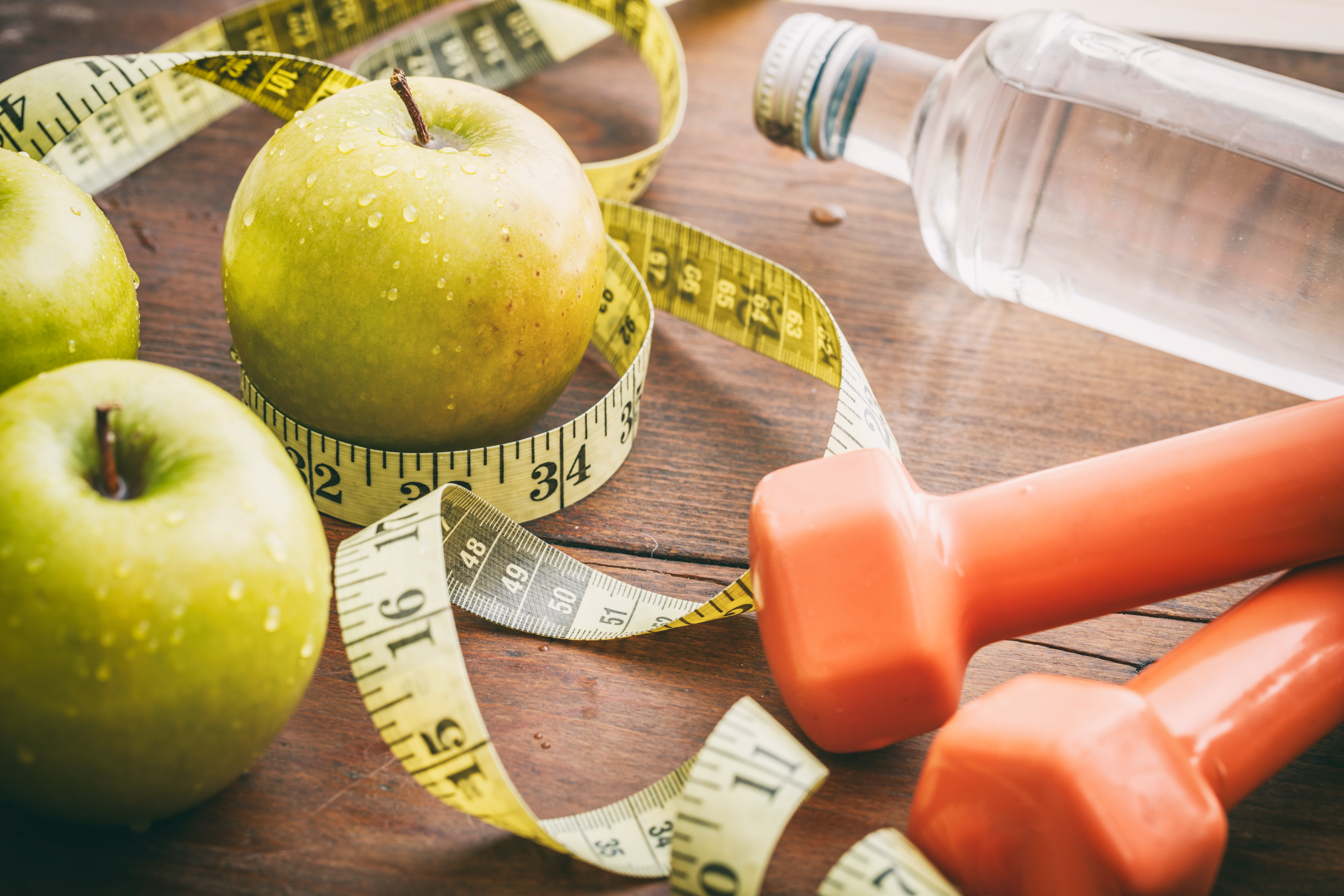By: Jill Weisenberger, MS, RDN, CDE, FAND —
It’s common for dieters to bump up their exercise, trim portions, eat more low-calorie foods and make other positive lifestyle changes. But should people who aren’t worrying with their weight make these changes? Here are three healthy living strategies worth doing whether we want to lose weight or not.
Healthy Habit #1: Move!
Exercise does far more than burn calories. Yes, it does help manage weight, but even without weight loss, exercise improves insulin resistance and decreases markers of chronic inflammation. Regular exercise is associated with reduced risks of heart disease, some cancers, type 2 diabetes, high blood pressure and more. It strengthens bones and muscles, improves mood and increases your chances of living both longer and healthier.[i] [ii] So how much exercise is necessary? Guideline #1 is any exercise (even 5 minutes) is better than none.
The Center for Disease Control and Prevention (CDC) recommends the following for healthy adults:
- 150 minutes of moderate-intensity aerobic activity each week
- At least two muscle-strengthening sessions each week that cover legs, hips, back, abdomen, chest, shoulders and arms
And don’t forget to be active between exercise sessions. Long periods of sedentary behavior are also unhealthful.
Healthy Habit #2: Cut Back on Added Sugars
A mere tablespoon of added sugar or honey contributes 45 – 60 calories, which can add up fast for anyone watching calories. But excessive added sugars are linked to poor health in ways other than weight gain. The American Heart Association recommends limiting added sugars to reduce the risk of dying from heart disease.[iii] Added sugars may contribute to elevated triglycerides and other metabolic abnormalities.
Healthy Habit #3: Load Up on Non-starchy Vegetables
Non-starchy vegetables like carrots, kale and cauliflower add only about 20 or so calories per ½ cup. Plus, they’re very filling, making them a calorie counter’s good friend. But these nutritional powerhouses are so much more. They provide fiber, potassium, magnesium, folate, and vitamins A, C and K. And they’re brimming with health-boosting phytochemicals, natural plant compounds that interact with other nutrients to shield us from disease. A healthy diet rich in vegetables is linked to lower blood pressure and healthier hearts. It lowers the risk of stroke, type 2 diabetes and several cancers too. The federal government’s MyPlate recommends that adults eat at least two to three cups of vegetables daily.
Take steps today to improve your chances for living a long, happy, healthy life. Take a walk, eat vegetables with every lunch and dinner and cut back on added sugars.Resources[i] CDC guidelines on exercise: http://www.cdc.gov/physicalactivity/basics/pa-health/
[ii] Sedentary Behaviors and Subsequent Health Outcomes in Adults Thorp AA, Owen N, Neuhaus M, and Dunstan DW
[iii] American Heart Association. http://www.heart.org/HEARTORG/GettingHealthy/NutritionCenter/HealthyEating/Added-Sugars-Add-to-Your-Risk-of-Dying-from-Heart-Disease_UCM_460319_Article.jsp

Jill Weisenberger, MS, RDN, CDE, FAND has worked as both a nutrition counselor and a diabetes educator in the hospital and research settings, and now in private practice in Newport News, VA. Jill is the author of Diabetes Weight Loss – Week by Week and two upcoming books, The Overworked Person’s Guide to Better Nutrition and 21 Things You Need to Know about Diabetes and Your Heart. She is a member of the Academy of Nutrition and Dietetics, the American Association of Diabetes Educators and the American Diabetes Association. Follow Jill on Twitter @NutritionJill and find more at www.JillWeisenberger.com.















